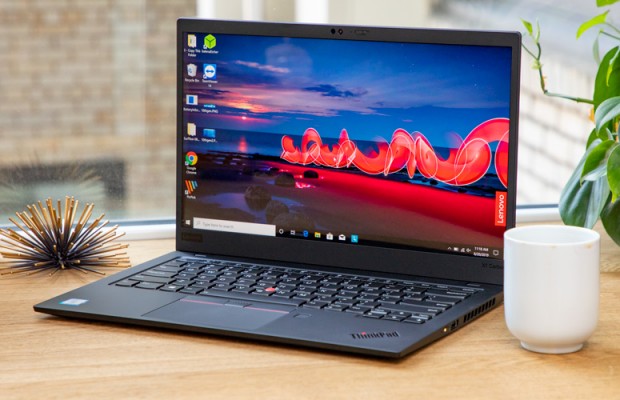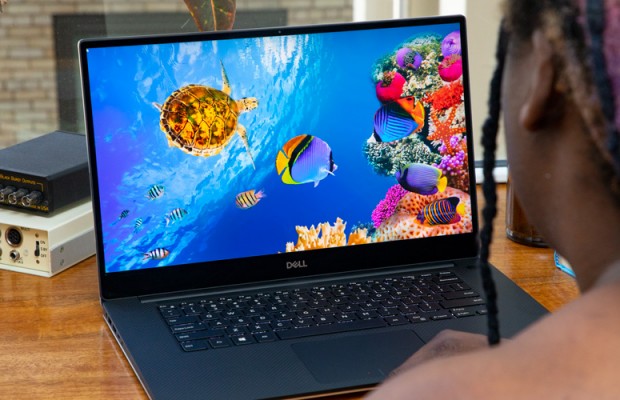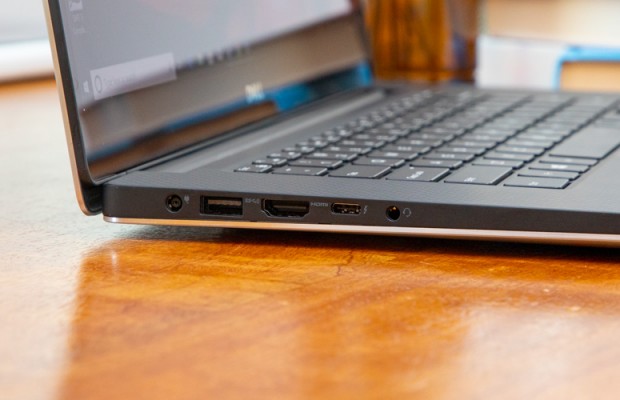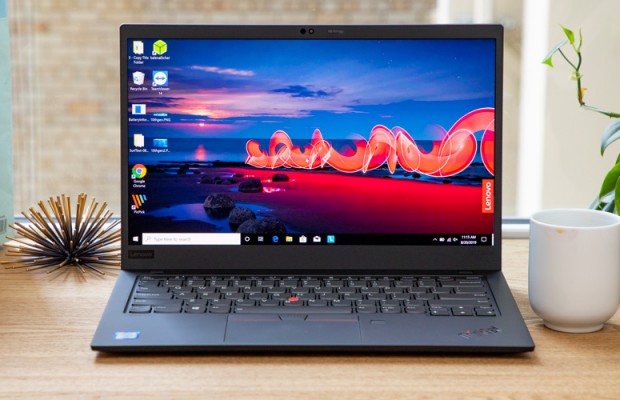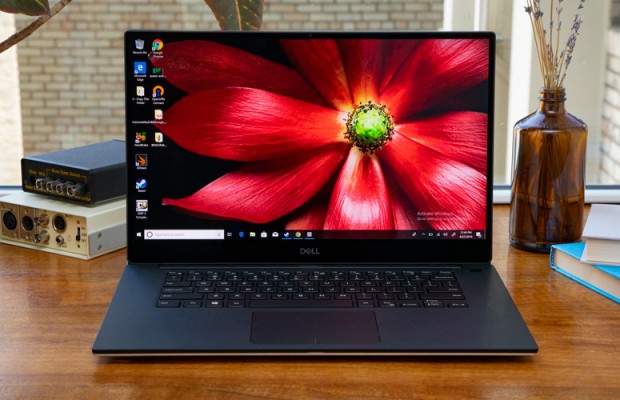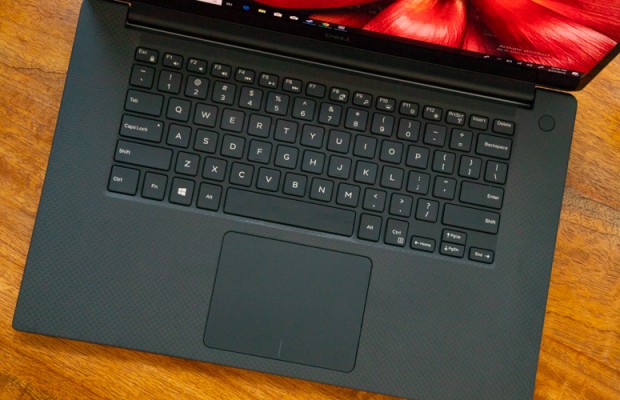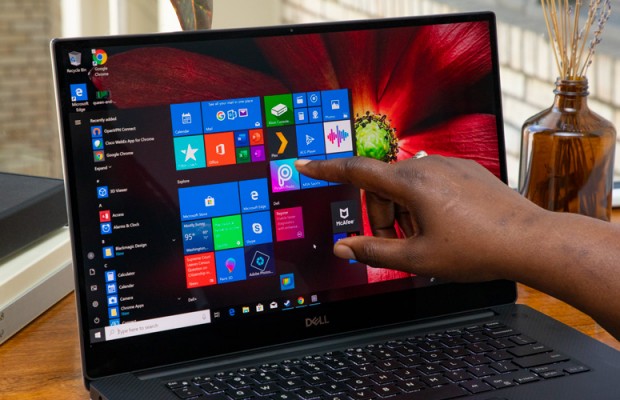Lenovo ThinkPad X1 Carbon vs Dell XPS 15: Which Laptop Wins?
Lenovo's new ThinkPad X1 Carbon is the best business laptop around. We not only recommend this excellent ultraportable laptop to business users, but also to everyday customers. But that audience has a much larger pool of devices to choose from, including our favorite 15-inch notebook: the Dell XPS 15.
Both the X1 Carbon and XPS 15 have a lot to offer. The X1 Carbon is a super lightweight laptop with a svelte design, an outstanding keyboard and long battery life. It's opponent, the XPS 15, flaunts many of those same perks but with a more powerful processor and discrete graphics. Unfortunately, those beefy components come at the expense of a heavier, less travel-friendly chassis.
Clearly, each of these laptops has their pros and cons. So if you want a large display in a portable chassis, which should you buy: the ThinkPad X1 Carbon or the Dell XPS 15? We've put these two to help you make the right choice.
Lenovo ThinkPad X1 Carbon vs Dell XPS 15: Specs Compared
| Lenovo ThinkPad X1 Carbon | Dell XPS 15 | |
| Price (Starting/as configured) | $1,463 ($2,562) | $1,099 ($2,649) |
| Colors | Black with red accents | Silver with black carbon fiber |
| Display | 14-inch, 1080p or 4K | 15.6-inch, 1080p or 4K (optional OLED) |
| CPU | Up to Intel Core i7-8665U (with vPro) | Up to Intel Core i9-9980HK |
| RAM | 8GB, 16GB | 8GB, 16GB, 32GB |
| SSD | 256GB, 512GB | 256GB, 512GB, 1TB |
| Ports | 2 Thunderbolt 3, Ethernet dock, 2 USB 3.1 Type-A, HDMI, Kensington lock, headphone | Thunderbolt 3, 2 USB 3.1 Type-A, HDMI, SD card, lock slot, headphone |
| Battery Life (hrs:min) | 12.7 x 8.6 x 0.6 inches 5:33 (4K), 9:30 (1080p) | 8:07 (4K OLED), 8:48 (4K) |
| Geekbench | 16,597 | 28,882 |
| Size | 12.7 x 8.6 x 0.6 inches | 14.1 x 9.3 x 0.7 inches |
| Weight | 2.1 pounds | 4.5 pounds |
X1 Carbon vs XPS 15 design
The ThinkPad X1 Carbon places the iconic ThinkPad look onto an ultrathin and lightweight chassis without compromising durability. The stealthy, minimalist appearance returns, complete with stylish X1 and ThinkPad branding along with red accents. New to the 2019 model is an optional carbon-fiber weave pattern on the lid that emphasizing the laptop's durable materials. Other changes include the addition of speaker grills on each side of the keyboard and the power button was moved to the right edge.
Sign up to receive The Snapshot, a free special dispatch from Laptop Mag, in your inbox.
A combination of anodized aluminum and carbon fiber gives the XPS 15's chassis a premium appearance as well as a reassuring rigidity. The laptop's silver lid and chrome Dell logo have a modern simplicity while the black carbon-fiber waved deck gives the XPS 15 its signature look. We also appreciate the XPS 15's narrow display bezels, which draws our eyes towards the screen and keeps the XPS 15's footprint to a minimum.
With a chassis made of magnesium and carbon fiber, the 14-inch ThinkPad X1 Carbon (12.7 x 8.5 x 0.6 inches, 2.1 pounds) is substantially lighter than the aluminum-clad XPS 15 (14.1 x 9.3 x 0.7 inches, 4.5 pounds). However, Dell's laptop is incredibly compact when you consider its large 15.6-inch display.
Winner: ThinkPad X1 Carbon
Buy the Lenovo ThinkPad X1 Carbon
X1 Carbon vs XPS 15 ports
You'd expect the larger XPS 15 would offer a wider range of ports, but this ended up being a very close call
The ThinkPad X1 Carbon is surprisingly well-stocked, featuring two Thunderbolt 3 port, an Ethernet dock connector, a USB 3.1 Type-A port, an HDMI and headphone/mic jack on its left side. You also get a second USB Type-A port and a Kensington lock on the right side.
The XPS 15 also comes with two USB 3.1 Type-A ports split on each side of the laptop, but only a single Thunderbolt 3 port. The XPS 15 makes up for that missing input with an SD card slot to go along with an HDMI 2.0 port, headphone/mic jack and wedge lock.
Winner: Draw
X1 Carbon vs XPS 15 display
We tested the 1080p and 4K display options available on the ThinkPad X1 Carbon and the 4K and 4K OLED panel options on the Dell XPS 15.
We can't declare a winner for best 1080p display because we haven't tested the XPS 15's optional FHD panel, but the ThinkPad X1 Carbon's (109% sRGB, 336 nits) is very good.
If you need the best 4K display, get the XPS 15's 15.6-inch OLED panel. That brilliant display covers an exceptional 239% of the sRGB color gamut, making it more vivid than the standard 4K panel (210%) and much more saturated than the ThinkPad X1 Carbon's 14-inch 4K HDR screen (144%).
The XPS 15's OLED screen is also blindingly bright, peaking at 626 nits. The XPS 15's standard 4K screen (418 nits) and the X1 Carbon's 4K panel (432 nits) are plenty bright, not still nowhere near as luminous.
Winner: XPS 15
MORE: Best Dell and Alienware Laptops
X1 Carbon vs XPS 15 keyboard and touchpad
This is no contest.
The X1 Carbon's keyboard is the best in its class. Those subtly curved keys have plenty of travel and a nice clicky feedback. The chiclet-style keyboard is a bit weighty and the Ctrl and Fn keys are flipped, but those hardly detract from the X1 Carbon's extremely comfortable typing experience.
Dell hasn't done much to improve the keyboard on the XPS 15. It's not bad, but it's not great, either. The keys are quite shallow and a bit cramped or how large the laptop's deck is. On the bright side, there is a nice clickiness to the keys and they are large enough for those with large hands.
The 4.1 x 3.1-inch Precision touchpad on the XPS 15 is spacious and responsive. We prefer it to the ThinkPad X1 Carbon's smallish 3.9 x 2.2-inch touchpad, even though you get comfortable left-and-right click buttons. The X1 Carbon also has a pointing stick for those who prefer the little rubber nub over a touchpad.
Winner: ThinkPad X1 Carbon
MORE: Best Lenovo Laptops
X1 Carbon vs XPS 15 performance
Here is where these two laptops differ in a big way. The XPS 15 was built for performance and packs powerful H-series CPUs, unlike the X1 Carbon which has U-series chips made for ultraportable machines. It's no surprise then that the XPS 15 (Core i9-9980H CPU, 32GB of RAM) dominated the ThinkPad X1 Carbon (Core i7-8565U, 16GB of RAM) in our performance benchmarks.
On the Geekbench 4.1 overall performance test, the XPS 15 scored a 28,888 whereas the ThinkPad X1 Carbon nabbed a 16,545. Both of those results top the premium laptop average (13,853) by a good margin.
Our Handbrake video test was a blowout in favor of the XPS 15. Dell's powerhouse laptop converted a 4K video into 1080p in just 8 minutes, less than half the time it took the ThinkPad X1 Carbon (17:40) and premium laptop average (21:53).
Our hard drive test was a dead-even sprint. The ThinkPad X1 Carbon's 512GB M.2 PCIe NVMe SSD kept stride-for-stride with the XPS 15's 1TB PCIe SSD by duplicating 4.97GB of multimedia files in 10 seconds at a rate of 508 megabytes per second. That's a quick pace, but not as fast as the category average (514.5 MBps).
Pitting the XPS 15's Nvidia GeForce GTX 1650 GPU against the ThinkPad X1 Carbon's integrated UHD 620 graphics is hardly fair. Alas, the XPS 15 is a much better system for gamers and proved as much by running Dirt 3 at 80 frames per second whereas the X1 Carbon only hit 27 fps (well short of the 62 fps category average).
Winner: XPS 15
X1 Carbon vs XPS 15 battery life
We were impressed by the endurance of the XPS 15 versions with 4K and 4K OLED displays. The OLED iteration lasted for 8 hours and 7 minutes whereas the non-OLED 4K model stayed powered for 8 hours and 48 minutes. Both of those times are several hours longer than the 4K ThinkPad X1 Carbon's 5 hour and 33 minute runtime.
MORE: Longest Battery Life Laptops
We can't declare a winner in this category because we haven't tested the 1080p version of the XPS 15 but the X1 Carbon with an FHD display lasted for an impressive 9 hours and 30 minutes.
Winner: Draw
X1 Carbon vs XPS 15 price and value
These are some very expensive laptops, but how you spend will largely depend on how you configure your machine. Lenovo's ThinkPad X1 Carbon starts at $1,463 for a base model with a 1080p display, a Core i5 -8265U CPU, 8GB of RAM and a 256GB M.2 PCIe NVMe SSD.
For $1,697, you can upgrade to a Core i7-8565U CPU, 16GB of RAM and a 256GB SSD. Need more storage? A 512GB model goes for $159 more. 4K options are even pricier; the top-of-the-line unit with a Core i7-8665U (with vPro) CPU, 16GB of RAM and a 1TB SSD costs a hefty $2,562.
At $1,099, the XPS 15 has a lower starting price but that 1080p base model only has a Core i5-9300H CPU, 8GB of RAM and a 256GB M.2 NVMe PCIe SSD and integrated graphics.
Upgrading to a mid-tier option costs $1,599 if you want a Core i7-9750H CPU, 8GB of RAM, a 256GB SSD and an Nvidia GeForce GTX 1650 GPU with 4GB of vRAM. Another $400 doubles RAM to 16GB and gets you a 4K panel.
MORE: Best and Worst Laptop Brands
Our decked out review unit cost a wallet-emptying $2,649 but was outfitted with some generous specs, including a 4K OLED display, a Core i9-9980KH CPU with 32GB of RAM, a 1TB SSD and a GeForce GTX 1650 GPU.
Winner: Draw
Overall Winner: Dell XPS 15
This was a close matchup between two laptops we really love. In the end, power won out. The XPS 15 is meant for performance and that showed in our benchmark tests. But it wasn't just the laptop's beastly components --- the XPS 15 also has a better 4K display option and longer battery life (at least the 4K version) than the X1 Carbon.
| Row 0 - Cell 0 | ThinkPad X1 Carbon | Dell XPS 15 |
| Design (10) | 9 | 8 |
| Ports (10) | 7 | 7 |
| Display (15) | 12 | 14 |
| Keyboard/Touchpad (15) | 14 | 12 |
| Performance (20) | 17 | 20 |
| Battery Life (20) | 17 | 17 |
| Value (10) | 6 | 6 |
| Overall (100) | 82 | 84 |
But don't rule the ThinkPad X1 Carbon out. Lenovo's sleek business laptop is a lot more portable than the XPS 15 and it has a much better keyboard.
Want the best of both worlds? Consider the 15.6-inch ThinkPad X1 Extreme, which takes the X1 Carbon and upscales it in order to compete with the performance of the XPS 15. We expect to get the 2nd Gen ThinkPad X1 Extreme in our office soon so anticipate a full review in the coming weeks.
Credit: Laptop Mag
Phillip Tracy is the assistant managing editor at Laptop Mag where he reviews laptops, phones and other gadgets while covering the latest industry news. After graduating with a journalism degree from the University of Texas at Austin, Phillip became a tech reporter at the Daily Dot. There, he wrote reviews for a range of gadgets and covered everything from social media trends to cybersecurity. Prior to that, he wrote for RCR Wireless News covering 5G and IoT. When he's not tinkering with devices, you can find Phillip playing video games, reading, traveling or watching soccer.

